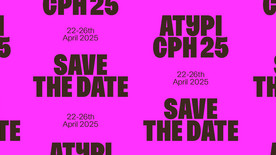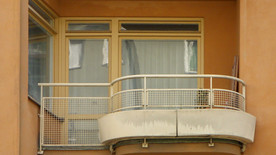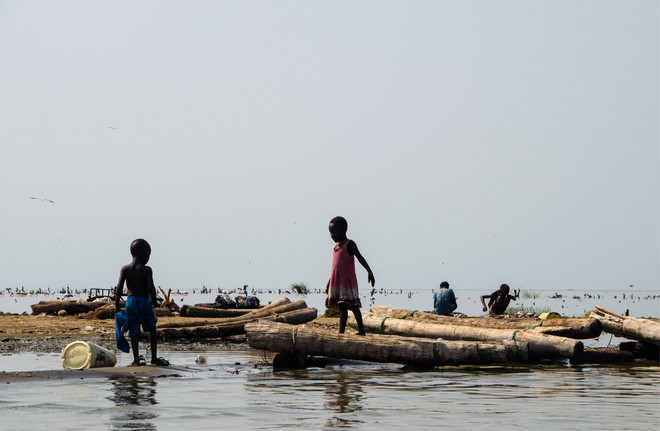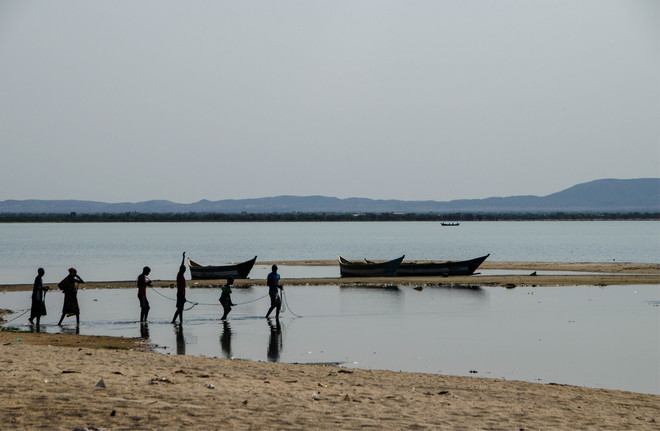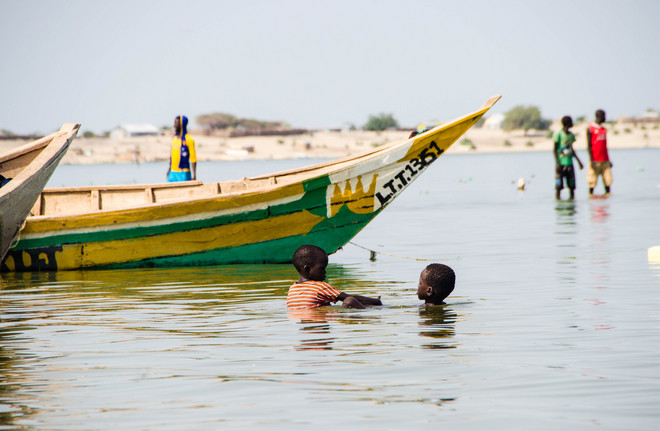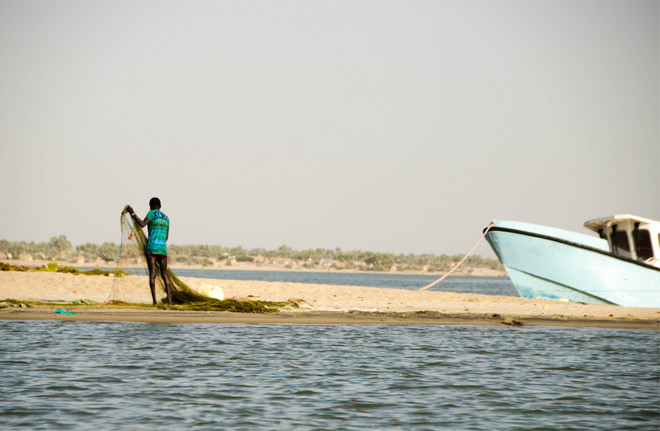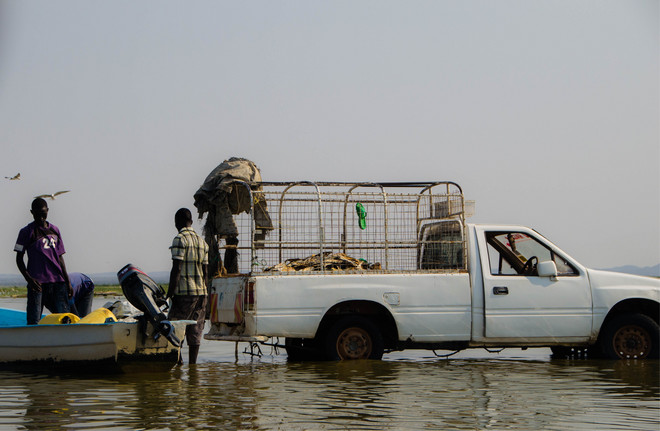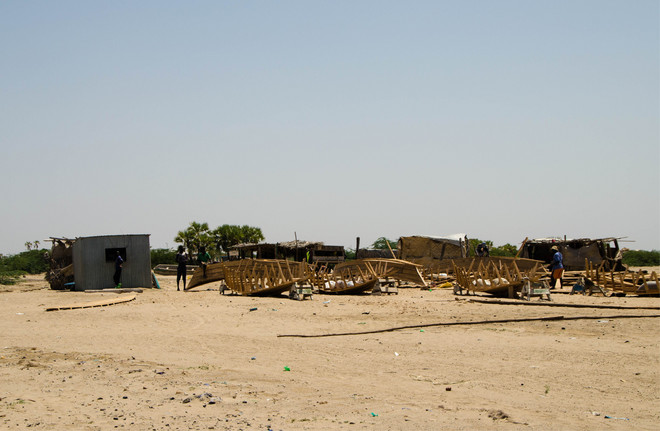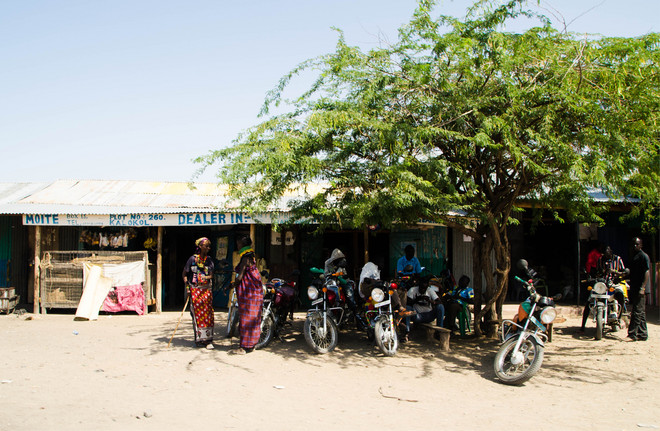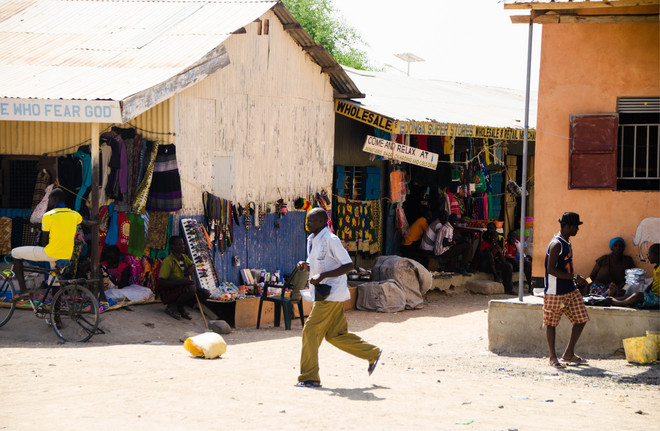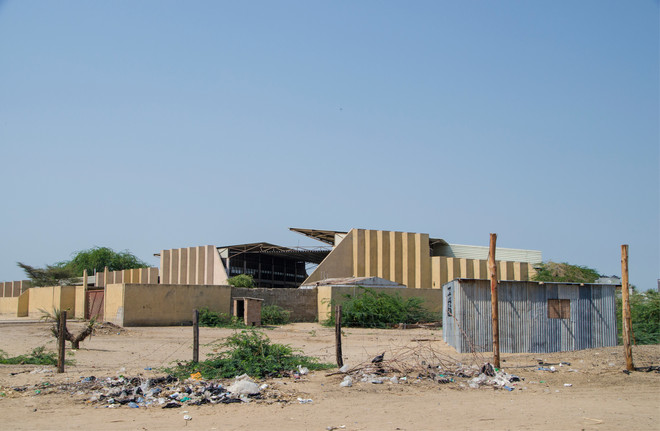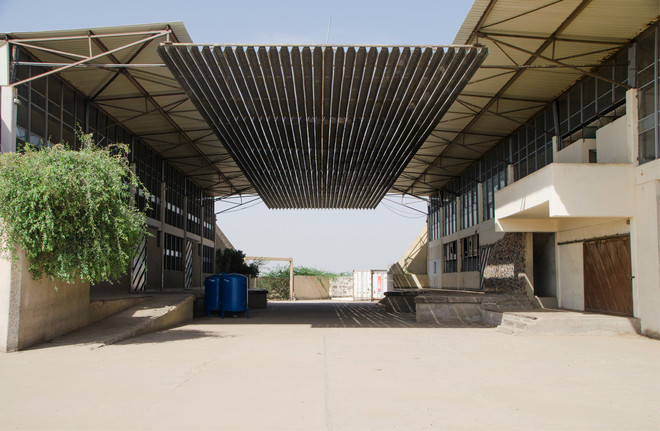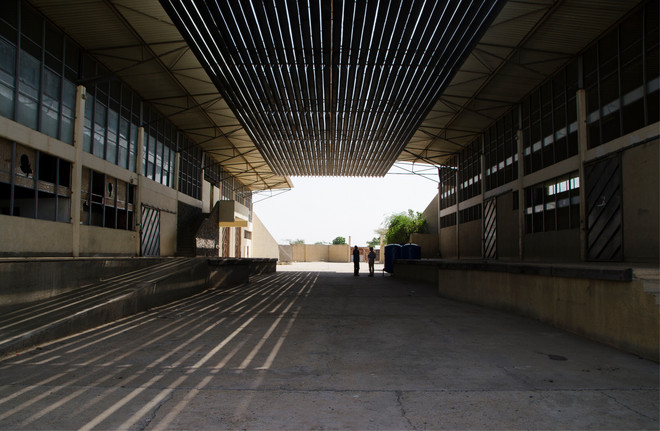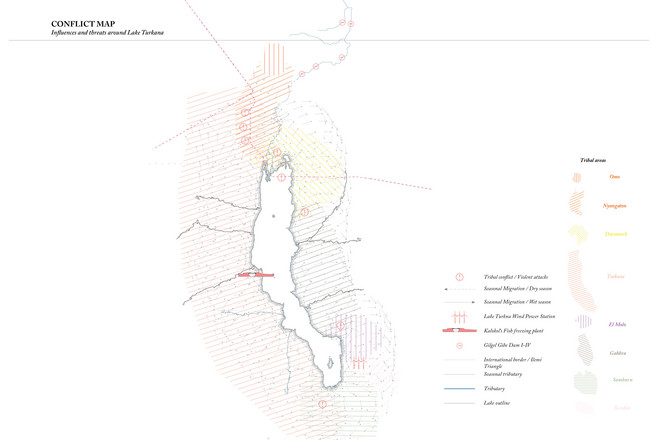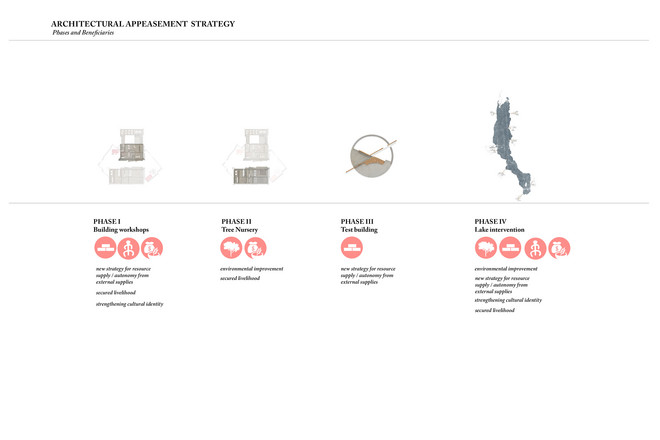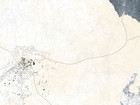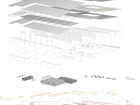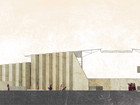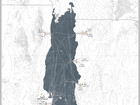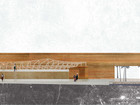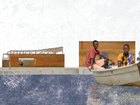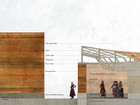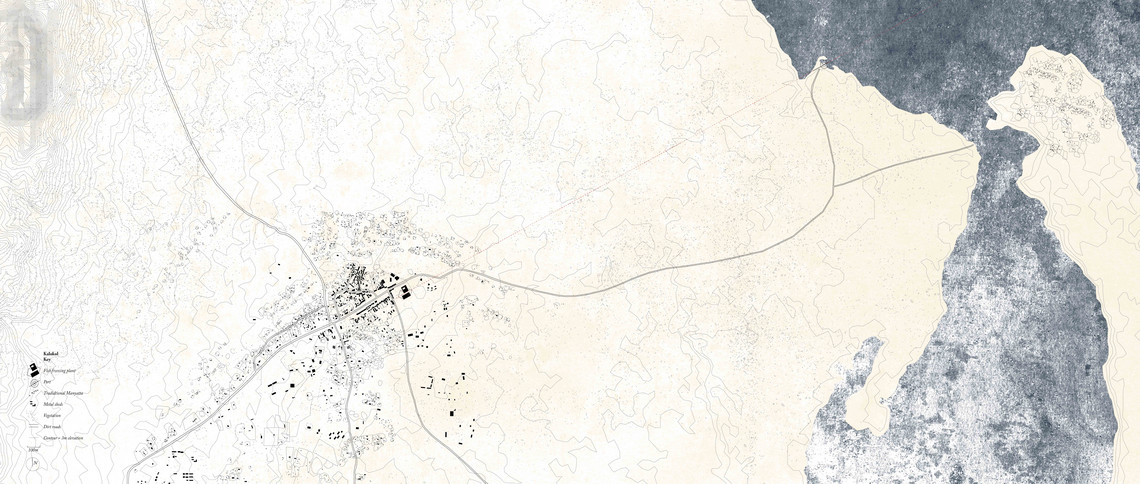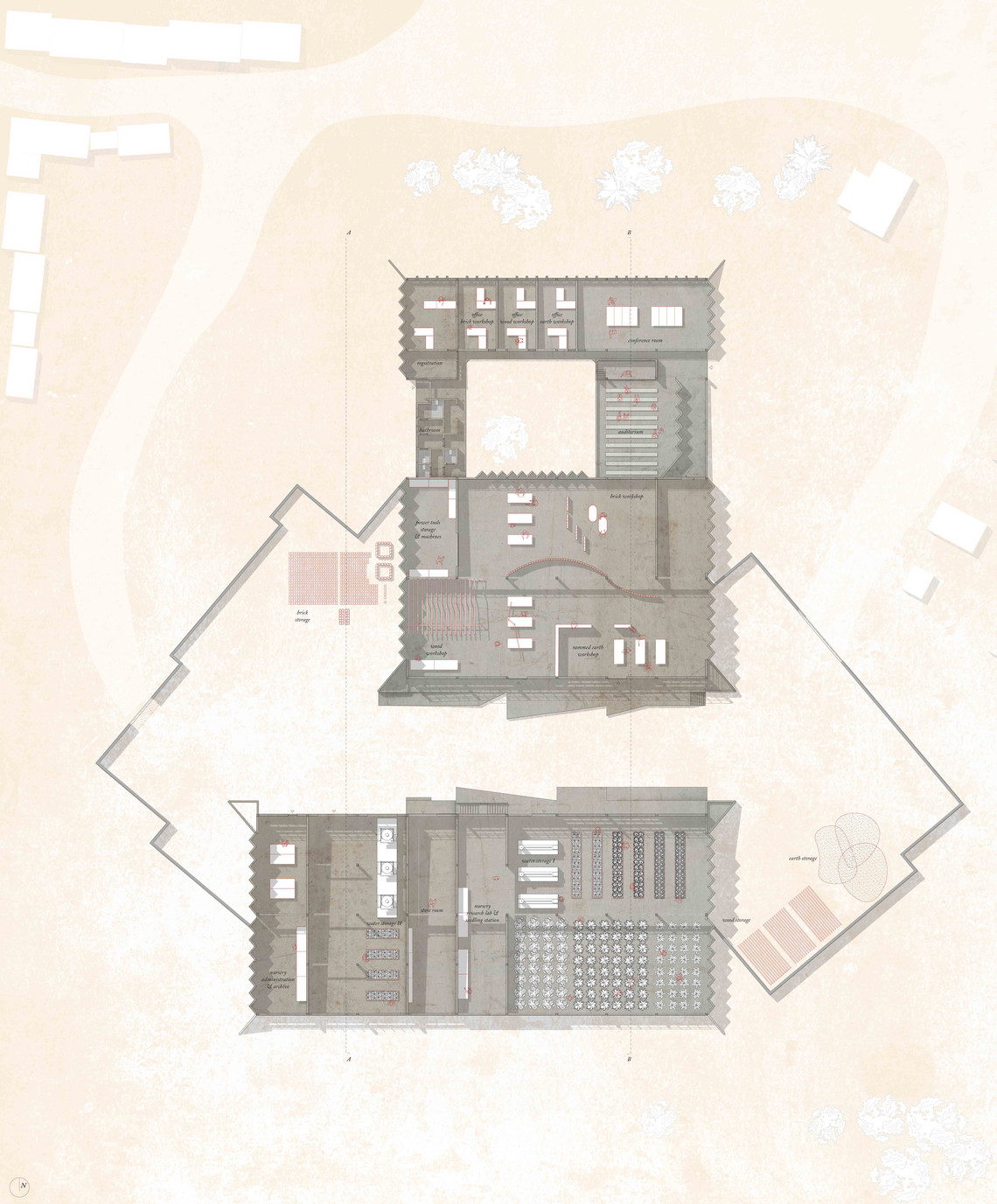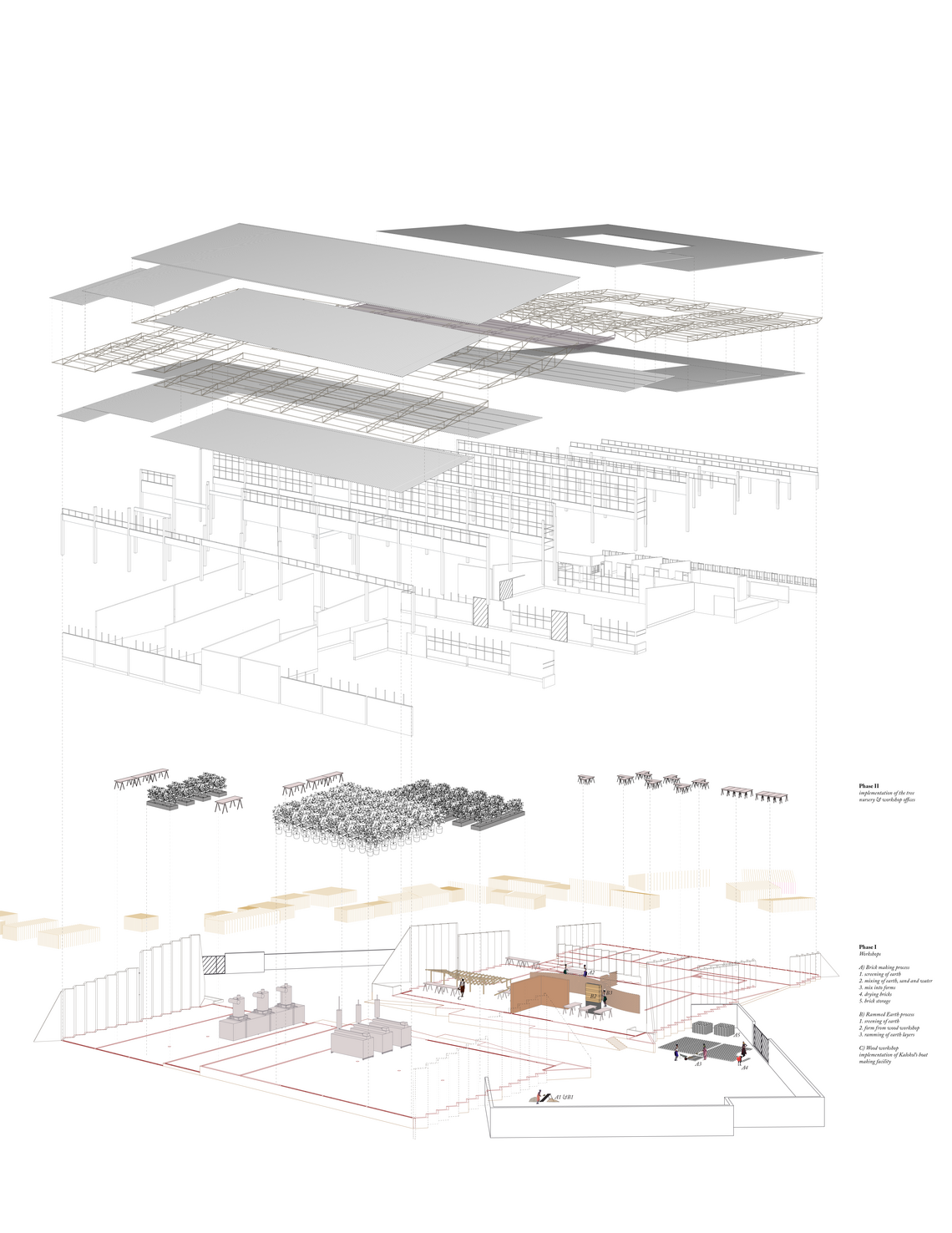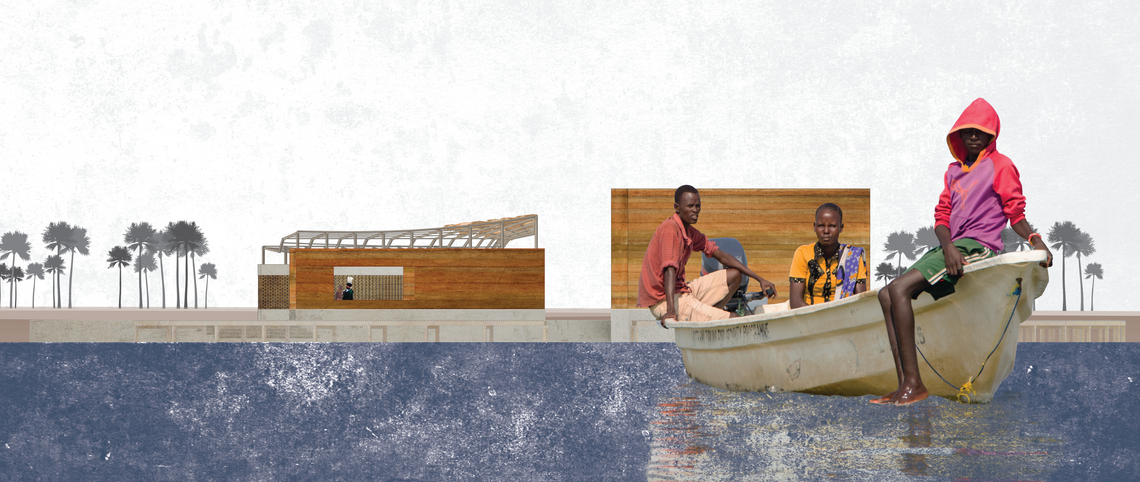
Architecture between conflicts

Architecture Between Conflicts is a prospective project that addresses tribal conflict in the Turkana region of Kenya through the reuse of an abandoned fish freezing plant as a kick-starter for regenerative development and a series of ports and pavilions as test sites to explore innovative and low-energy construction techniques. Turkana is ranked the poorest county in Kenya, with 94.3% of the population living under the poverty line. It is a troubled region where local tribes have historically clashed over limited resources, where national borders are not in line with historical boundaries and, above all, where climate change, oil discovery and the construction of a hydropower dam add further challenges to an already tense situation.
After a severe drought in the 1960s the Kenyan Government, in collaboration with the Norwegian aid agency NORAD, developed a relief plan to combat the increasing poverty and child mortality. A fish freezing plant was built in an area called Kalokol, following the maxim ‘give a man a fish and you feed him for a day. Teach him how to fish and you will feed him for his life’. The plan proposed a modern cold storage and fish freezing plant in the Turkana desert, an area that neither had electricity nor adequate infrastructure for industrial production nor a tradition of fishing. It has been crumbling since the day it opened in 1981.
The project tries to turn this failed idea around, and instead of implementing something new into the area, working with what is on site - on all layers material and immaterial. The project is a ‚humanitarian aid‘ project in so far, as it shares the same core values and objectives of conventional humanitarian aid agencies: to reduce human suffering and to protect human dignity during conflict. Further the approach of the project revolves the conventional strategy of humanitarian aid, which often fails because of a lack of cultural understanding of the context it is implemented into. Awareness of cultural identity is fundamental basis for dignity and prosperity, and hence brokering peace. Peace building, and peace keeping is only possible, as it joins cultural approaches of all tribes around the lake, with an historical period that lies before the cultural split up of the tribes.









